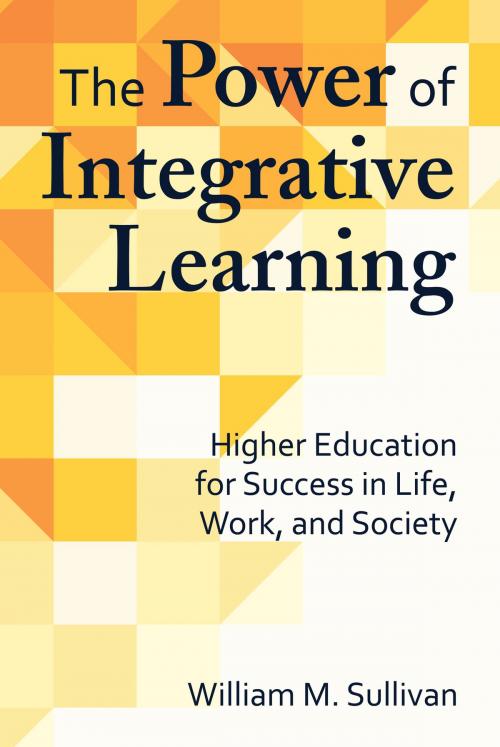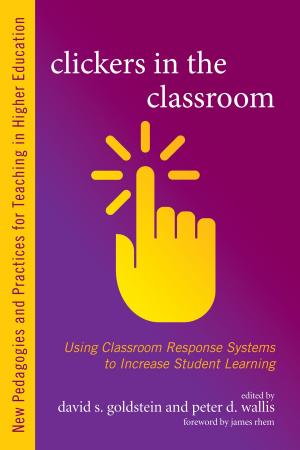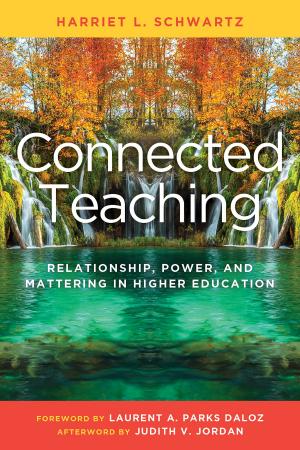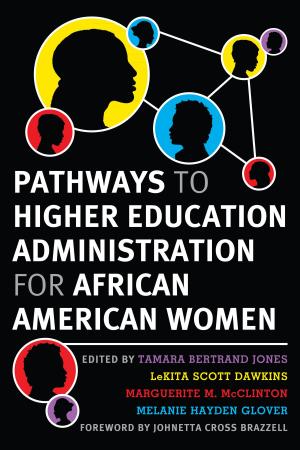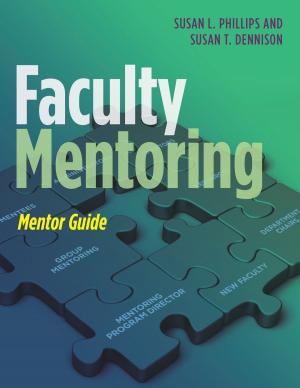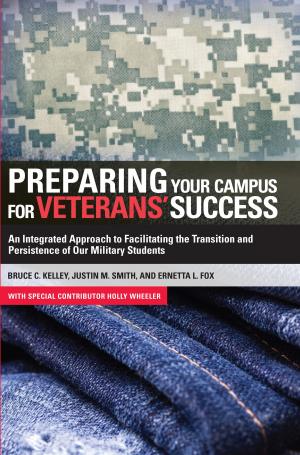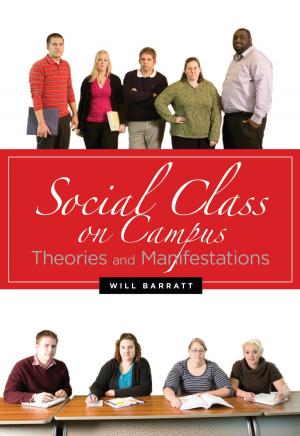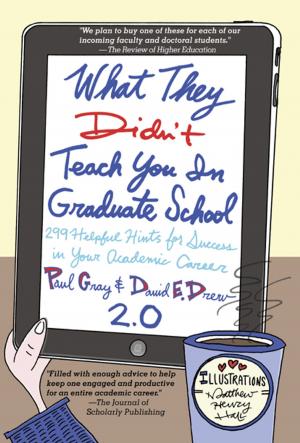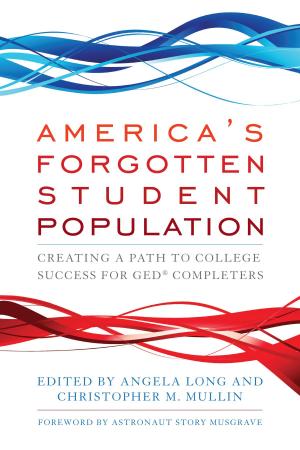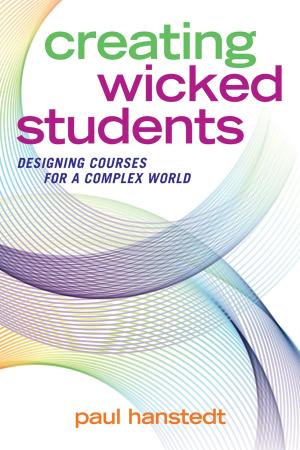The Power of Integrated Learning
Higher Education for Success in Life, Work, and Society
Nonfiction, Reference & Language, Education & Teaching, Student & Student Life, Higher Education| Author: | William M. Sullivan | ISBN: | 9781620364109 |
| Publisher: | Stylus Publishing | Publication: | June 30, 2016 |
| Imprint: | Stylus Publishing | Language: | English |
| Author: | William M. Sullivan |
| ISBN: | 9781620364109 |
| Publisher: | Stylus Publishing |
| Publication: | June 30, 2016 |
| Imprint: | Stylus Publishing |
| Language: | English |
Students and their parents wonder if college is worth the investment. Employers want graduates with the skills they need. The public wonders if higher education is preparing future generations for an era of dynamic change.
In his latest book, William Sullivan offers a model of higher education that answers all these questions in the affirmative, through the power of integrated learning. Drawing on examples from the 25 members of the New American Colleges & Universities (NAC&U) consortium, the book makes the case for an approach that combines the strengths of the liberal arts, professional studies, and civic responsibility in order to give students the combination of skills and experience that will prepare them for success in all aspects of life after graduation.
NAC&U campuses place emphasis upon enabling their students to know themselves and their abilities, as well as providing them with opportunities to develop a sophisticated understanding of the world. To achieve these goals, the academic programs focus on developing students’ intellectual and practical skills, such as analytical ability, problem solving, facility in written and spoken communication, and an appreciation for human diversity and creativity. These have traditionally been identified as the goals of a liberal arts education, and are the same ones identified in a national employer survey as giving job-seekers an edge.
These institutions also invest a great deal of effort to provide their students with state-of-the-art preparation for professional life and occupational success in diverse fields. These range from the technical – science and technology fields, with disciplines such as engineering and computer science – through business, and across the human service fields, such as education, nursing, pre-medicine, and pre-law, to architecture, and the performing and visual arts. In these courses of study, students begin to shape their future careers.
The important third value of a NAC&U education is fostering civic responsibility among students. In programs of study abroad and a range of internship and service opportunities, these colleges support their students in shaping for themselves unique and effective ways to contribute to the larger life of their world.
Parents and prospective students may appreciate the chance to learn more about these schools and what they have to offer, while those working in higher education will appreciate the chance to learn more about a model that their own institutions may be motivated to emulate. All readers will take away a picture of a truly vital part of the higher education landscape in this country.
In his latest book, William Sullivan offers a model of higher education that answers all these questions in the affirmative, through the power of integrated learning. Drawing on examples from the 25 members of the New American Colleges & Universities (NAC&U) consortium, the book makes the case for an approach that combines the strengths of the liberal arts, professional studies, and civic responsibility in order to give students the combination of skills and experience that will prepare them for success in all aspects of life after graduation.
NAC&U campuses place emphasis upon enabling their students to know themselves and their abilities, as well as providing them with opportunities to develop a sophisticated understanding of the world. To achieve these goals, the academic programs focus on developing students’ intellectual and practical skills, such as analytical ability, problem solving, facility in written and spoken communication, and an appreciation for human diversity and creativity. These have traditionally been identified as the goals of a liberal arts education, and are the same ones identified in a national employer survey as giving job-seekers an edge.
These institutions also invest a great deal of effort to provide their students with state-of-the-art preparation for professional life and occupational success in diverse fields. These range from the technical – science and technology fields, with disciplines such as engineering and computer science – through business, and across the human service fields, such as education, nursing, pre-medicine, and pre-law, to architecture, and the performing and visual arts. In these courses of study, students begin to shape their future careers.
The important third value of a NAC&U education is fostering civic responsibility among students. In programs of study abroad and a range of internship and service opportunities, these colleges support their students in shaping for themselves unique and effective ways to contribute to the larger life of their world.
Parents and prospective students may appreciate the chance to learn more about these schools and what they have to offer, while those working in higher education will appreciate the chance to learn more about a model that their own institutions may be motivated to emulate. All readers will take away a picture of a truly vital part of the higher education landscape in this country.
Students and their parents wonder if college is worth the investment. Employers want graduates with the skills they need. The public wonders if higher education is preparing future generations for an era of dynamic change.
In his latest book, William Sullivan offers a model of higher education that answers all these questions in the affirmative, through the power of integrated learning. Drawing on examples from the 25 members of the New American Colleges & Universities (NAC&U) consortium, the book makes the case for an approach that combines the strengths of the liberal arts, professional studies, and civic responsibility in order to give students the combination of skills and experience that will prepare them for success in all aspects of life after graduation.
NAC&U campuses place emphasis upon enabling their students to know themselves and their abilities, as well as providing them with opportunities to develop a sophisticated understanding of the world. To achieve these goals, the academic programs focus on developing students’ intellectual and practical skills, such as analytical ability, problem solving, facility in written and spoken communication, and an appreciation for human diversity and creativity. These have traditionally been identified as the goals of a liberal arts education, and are the same ones identified in a national employer survey as giving job-seekers an edge.
These institutions also invest a great deal of effort to provide their students with state-of-the-art preparation for professional life and occupational success in diverse fields. These range from the technical – science and technology fields, with disciplines such as engineering and computer science – through business, and across the human service fields, such as education, nursing, pre-medicine, and pre-law, to architecture, and the performing and visual arts. In these courses of study, students begin to shape their future careers.
The important third value of a NAC&U education is fostering civic responsibility among students. In programs of study abroad and a range of internship and service opportunities, these colleges support their students in shaping for themselves unique and effective ways to contribute to the larger life of their world.
Parents and prospective students may appreciate the chance to learn more about these schools and what they have to offer, while those working in higher education will appreciate the chance to learn more about a model that their own institutions may be motivated to emulate. All readers will take away a picture of a truly vital part of the higher education landscape in this country.
In his latest book, William Sullivan offers a model of higher education that answers all these questions in the affirmative, through the power of integrated learning. Drawing on examples from the 25 members of the New American Colleges & Universities (NAC&U) consortium, the book makes the case for an approach that combines the strengths of the liberal arts, professional studies, and civic responsibility in order to give students the combination of skills and experience that will prepare them for success in all aspects of life after graduation.
NAC&U campuses place emphasis upon enabling their students to know themselves and their abilities, as well as providing them with opportunities to develop a sophisticated understanding of the world. To achieve these goals, the academic programs focus on developing students’ intellectual and practical skills, such as analytical ability, problem solving, facility in written and spoken communication, and an appreciation for human diversity and creativity. These have traditionally been identified as the goals of a liberal arts education, and are the same ones identified in a national employer survey as giving job-seekers an edge.
These institutions also invest a great deal of effort to provide their students with state-of-the-art preparation for professional life and occupational success in diverse fields. These range from the technical – science and technology fields, with disciplines such as engineering and computer science – through business, and across the human service fields, such as education, nursing, pre-medicine, and pre-law, to architecture, and the performing and visual arts. In these courses of study, students begin to shape their future careers.
The important third value of a NAC&U education is fostering civic responsibility among students. In programs of study abroad and a range of internship and service opportunities, these colleges support their students in shaping for themselves unique and effective ways to contribute to the larger life of their world.
Parents and prospective students may appreciate the chance to learn more about these schools and what they have to offer, while those working in higher education will appreciate the chance to learn more about a model that their own institutions may be motivated to emulate. All readers will take away a picture of a truly vital part of the higher education landscape in this country.
